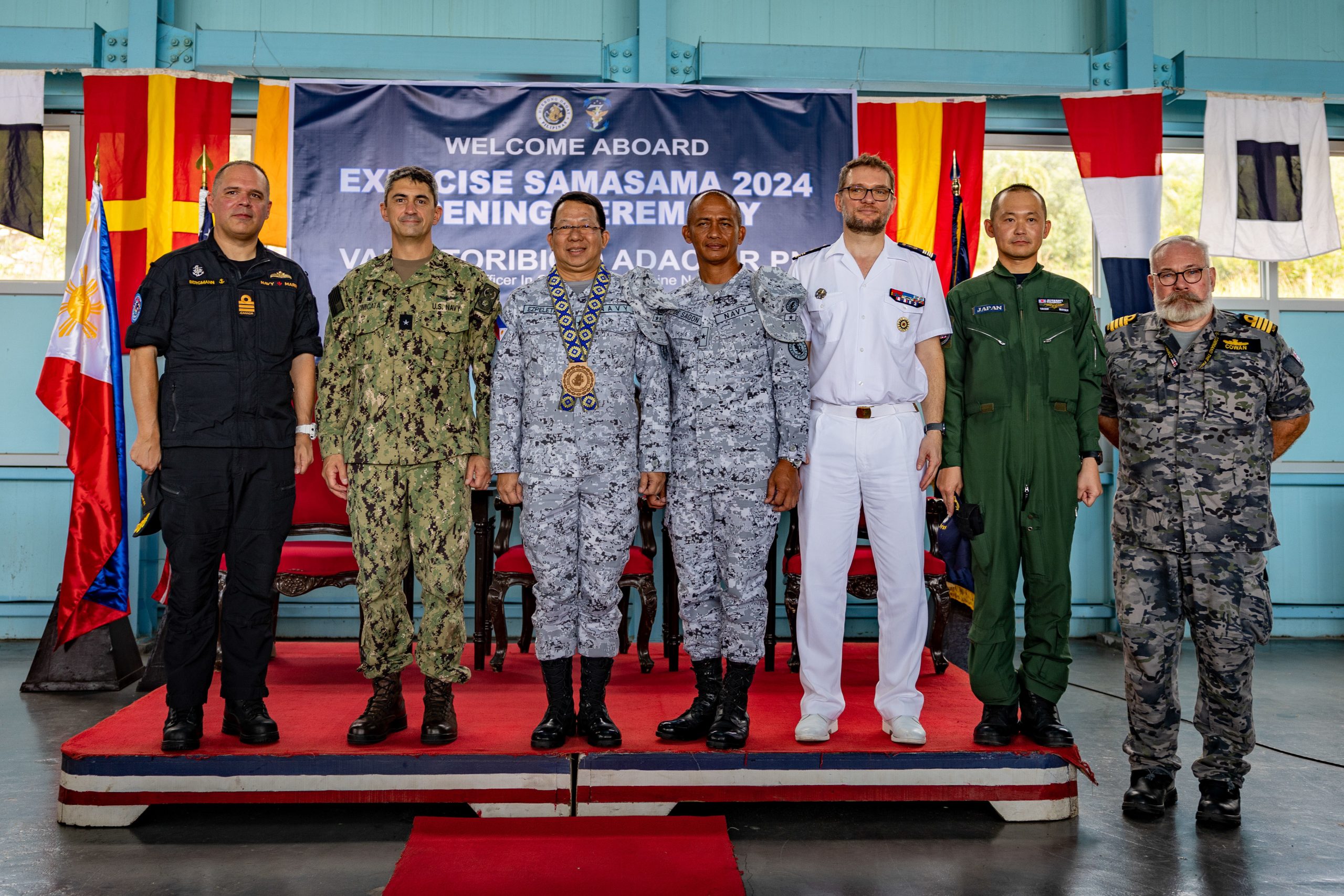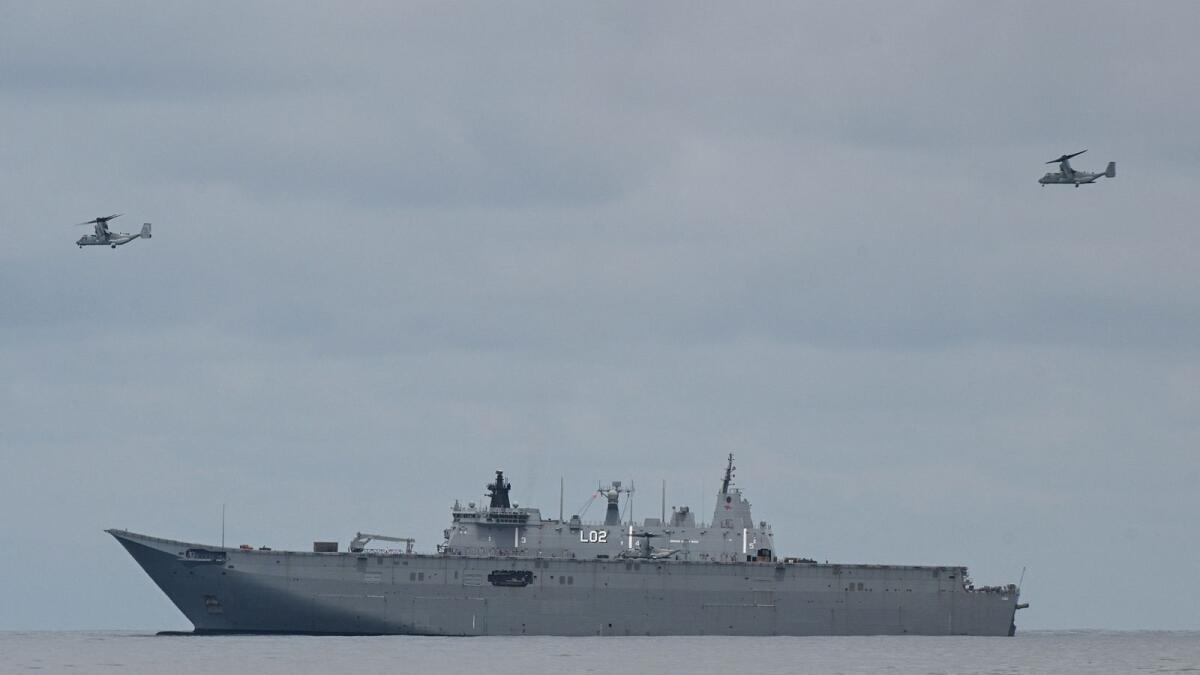A Region at the Crossroads of Security
The Indo-Pacific, a vast and dynamic region spanning critical maritime chokepoints and economic arteries, is increasingly becoming the epicenter of global security challenges. The region faces a wide array of threats, including territorial disputes, piracy, illegal fishing, and the growing presence of hostile military forces. Against this backdrop, international collaboration has emerged as a key strategy to maintain peace, security, and stability in these contested waters.
One such vital initiative is Exercise Sama Sama 2024, a multilateral maritime exercise hosted by the Philippines and the United States. What began as a bilateral exercise has grown over the years to include a diverse group of regional partners, reflecting a collective commitment to safeguarding the Indo-Pacific.
From Bilateral to Multilateral Security Cooperation
Since its inception, Exercise Sama Sama has evolved significantly, growing from a bilateral U.S.-Philippine naval exercise into a multinational training platform that fosters cooperation across the Indo-Pacific region. Held in the strategic waters near Subic Bay, the exercise now involves participants from Australia, Canada, Japan, France, and the United Kingdom, alongside the United States and the Philippines. This evolution reflects the increasing importance of maritime security in the Indo-Pacific, a region that sees some of the world’s busiest shipping lanes and is critical to global trade.
The term “Sama Sama” translates to “togetherness” in Tagalog, symbolizing the collaborative spirit that underpins the exercise. Rear Admiral Todd Cimicata, the U.S. Head of Delegation and Commander of Logistics for Western Pacific and Task Force 73 emphasized the strategic value of Sama Sama 2024, noting that “this development highlights the strength of our alliances and our shared commitment to peace, security, and cooperation in the maritime domain.” His words underscore the broader significance of this exercise—not only as a demonstration of military might but as a proactive approach to fostering regional security cooperation.
The scale and scope of Sama Sama 2024 are unprecedented, with both shore and sea phases featuring highly specialized training modules. These include anti-submarine warfare, anti-surface warfare, anti-air warfare, maritime domain awareness, and disaster response. Through these exercises, participating forces enhance their interoperability and readiness, ensuring that they can seamlessly respond to any potential security threat in the region.

Strategic Location: The Importance of Subic Bay and the Philippine Archipelago
Subic Bay, the location of Exercise Sama Sama 2024, is not only a hub for regional maritime activity but also a focal point for military strategy. Situated in the South China Sea, Subic Bay has historically been a strategic naval base, first for the United States during its colonial period and later for the Philippines. Today, its proximity to the contested waters of the South China Sea makes it a critical location for maritime defense exercises, particularly in the context of rising tensions over territorial disputes.
The South China Sea remains a hotbed of geopolitical rivalry, with China asserting sweeping claims over most of the sea, despite competing claims from other Southeast Asian nations, including the Philippines. The Philippines, which has engaged in multiple legal and diplomatic efforts to challenge China’s territorial assertions, views Subic Bay as an essential asset for asserting its sovereignty in the region. Exercise Sama Sama, therefore, not only serves as a military training exercise but also as a platform for the Philippines and its allies to reaffirm their commitment to a rules-based international order, particularly in the face of China’s growing influence.
The inclusion of regional partners in Sama Sama 2024 further enhances the Philippines’ ability to project power and defend its maritime interests. The exercise provides a venue for participating nations to coordinate their military strategies, share intelligence, and develop joint operational tactics. In a region where maritime security challenges are becoming increasingly complex, this level of coordination is crucial for ensuring that like-minded nations can effectively respond to threats.
Expanding Alliances for Greater Security
One of the most significant aspects of Sama Sama 2024 is its multilateral nature, which distinguishes it from earlier iterations. While previous exercises focused primarily on U.S.-Philippine cooperation, Sama Sama 2024 has grown into a comprehensive regional security effort, with participation from Australia, Japan, Canada, France, and the United Kingdom. This diverse group of participants reflects a shared interest in preserving the security and stability of the Indo-Pacific.
For instance, Japan, a key participant in Sama Sama, has long played a pivotal role in regional security, particularly through its Japan Maritime Self-Defense Force (JMSDF). The inclusion of Japanese assets, such as the Shin Maywa US-2 amphibious aircraft and the Kawasaki P-1 maritime patrol aircraft, provides critical capabilities for anti-submarine and maritime surveillance operations. Japan’s involvement not only strengthens the tactical capabilities of Sama Sama 2024 but also underscores Tokyo’s commitment to playing a proactive role in regional security, especially in light of the growing maritime challenges posed by China and North Korea.
Australia and Canada, both long-standing allies of the United States, have also increased their participation in Indo-Pacific security exercises in recent years. Australia’s Indo-Pacific strategy emphasizes the need for strong defense ties with regional partners, and its involvement in Sama Sama reinforces this commitment. Canada, on the other hand, has become more engaged in Indo-Pacific affairs as part of its broader efforts to contribute to global peacekeeping and maritime security.
The growing list of participants in Sama Sama 2024 is a testament to the exercise’s importance as a regional security initiative. It also reflects a collective acknowledgment of the interconnected nature of maritime security in the Indo-Pacific. As Rear Admiral Jose Ma. Ambrosio Ezpeleta, the Philippine Navy’s Head of Delegation, remarked, “This exercise is a powerful investment for our collective movement and an opportunity to address regional challenges together.” His words highlight the importance of multinational collaboration in addressing both traditional and non-traditional security challenges in the region.
Enhancing Readiness and Interoperability
The core of Sama Sama 2024 lies in its comprehensive training exercises, designed to prepare regional forces for a wide range of maritime threats. These exercises are not limited to conventional military operations but also extend to non-traditional security challenges such as humanitarian assistance, disaster response, and maritime domain awareness.
One of the most critical components of Sama Sama 2024 is the anti-submarine warfare (ASW) drills, a key area of concern given the increasing presence of submarines in the Indo-Pacific. Both the United States and its allies have invested heavily in ASW capabilities, recognizing the growing threat posed by stealthy underwater platforms that can disrupt critical sea lanes. By practicing ASW operations together, participating forces enhance their ability to detect and neutralize submarine threats, ensuring the safety of vital maritime routes.
Another significant focus of Sama Sama 2024 is maritime domain awareness (MDA), which involves the use of surveillance and reconnaissance assets to monitor activity in the maritime environment. MDA is critical for maintaining situational awareness in the Indo-Pacific, where vast expanses of water make it challenging to track vessels and detect potential threats. The U.S. Navy’s P-8A Poseidon maritime surveillance aircraft, along with Japan’s Kawasaki P-1, are key assets in this area, providing advanced capabilities for monitoring surface and subsurface activity.
Additionally, the exercise emphasizes the importance of humanitarian assistance and disaster response (HADR), reflecting the region’s vulnerability to natural disasters such as typhoons, earthquakes, and tsunamis. By practicing HADR operations, participating forces improve their ability to respond quickly and effectively to crises, ensuring that they can provide timely aid to affected populations.
These exercises not only enhance the tactical readiness of participating forces but also improve their interoperability—a key objective of Sama Sama. As Rear Admiral Cimicata noted, “Through exercises like Sama Sama, we continue to improve our interoperability and our readiness while deepening our understanding of each other’s capabilities.” Interoperability is essential for ensuring that regional forces can operate together seamlessly in response to a wide range of security challenges.

Addressing Evolving Maritime Threats
The Indo-Pacific region faces a growing array of maritime security challenges, from territorial disputes in the South China Sea to the increasing presence of hostile military forces. Exercise Sama Sama 2024 is designed to address these evolving threats by fostering cooperation and enhancing the capabilities of regional forces.
One of the most pressing security concerns in the region is the South China Sea, where overlapping territorial claims have led to increased tensions between China and its Southeast Asian neighbors. China’s construction of artificial islands and militarization of key features in the South China Sea have raised alarms among regional powers, who view these actions as a threat to the rules-based international order. By conducting maritime security exercises in the vicinity of these contested waters, Sama Sama participants send a clear message that they are committed to upholding freedom of navigation and the peaceful resolution of disputes.
Another key concern is the growing presence of submarines and other underwater platforms in the Indo-Pacific. Submarines, which can operate undetected for extended periods, pose a significant threat to both military and commercial vessels. Sama Sama’s focus on anti-submarine warfare drills is critical for addressing this threat, ensuring that participating forces can effectively detect and neutralize submarine activity in the region.
Non-traditional security challenges, such as piracy, illegal fishing, and trafficking, also pose significant risks to maritime security in the Indo-Pacific. These activities undermine the economic stability of coastal states and contribute to regional instability. Sama Sama 2024 addresses these challenges by emphasizing the importance of maritime domain awareness and law enforcement cooperation. By working together to monitor and patrol the region’s waters, participating forces can help prevent illegal activities and maintain the rule of law in the maritime domain.
Strengthening Security Through Cooperation
Exercise Sama Sama 2024 represents a critical step forward in enhancing maritime security in the Indo-Pacific. Through its comprehensive training exercises, the inclusion of diverse regional partners, and its focus on addressing both traditional and non-traditional threats, Sama Sama plays a key role in strengthening the security architecture of this vital region.
As the Indo-Pacific faces an increasingly complex security environment, the importance of cooperation among like-minded nations cannot be overstated. Sama Sama 2024 reflects a shared commitment to maintaining peace, stability, and the rule of law in the maritime domain. By working together, the Philippines, the United States, and their regional partners are not only improving their own security capabilities but also contributing to the broader goal of preserving a free and open Indo-Pacific.
In the years to come, exercises like Sama Sama will continue to play a vital role in shaping the future of regional security. As the threats facing the Indo-Pacific evolve, so too must the strategies and partnerships that seek to address them. Through continued collaboration and investment in collective defense, the nations of the Indo-Pacific can ensure that this critical region remains secure, prosperous, and free from coercion.



